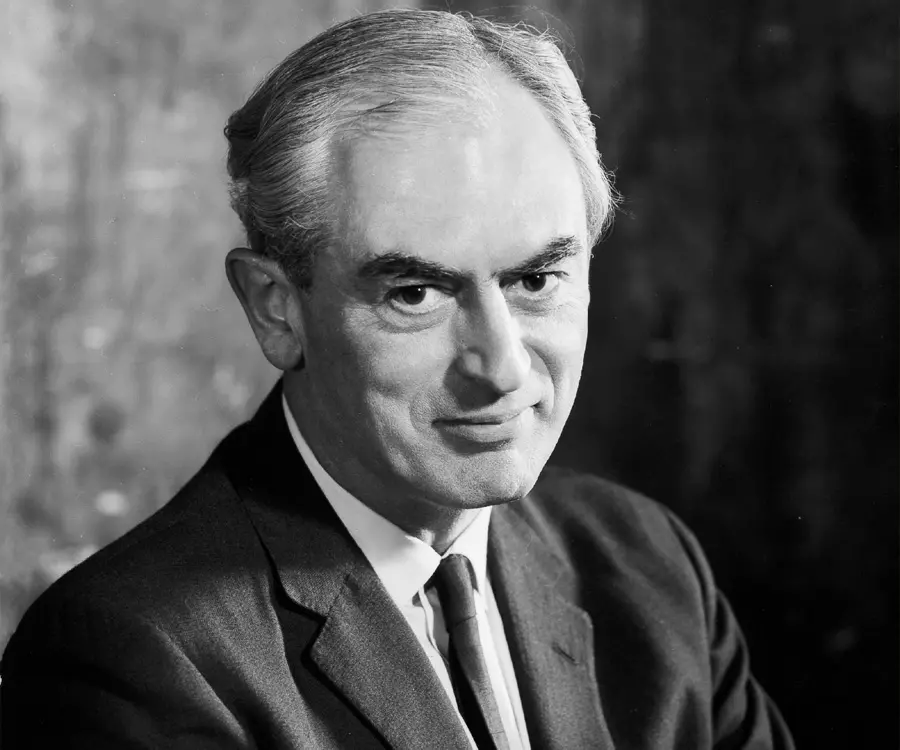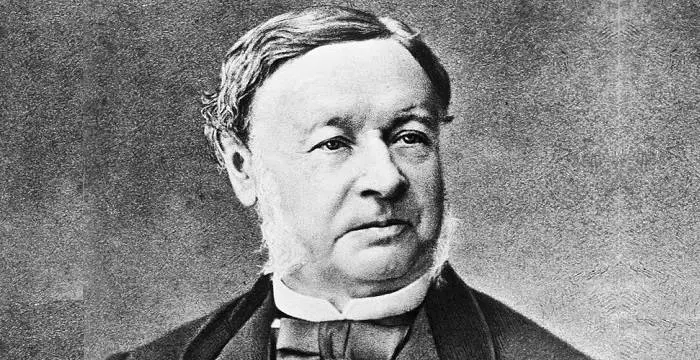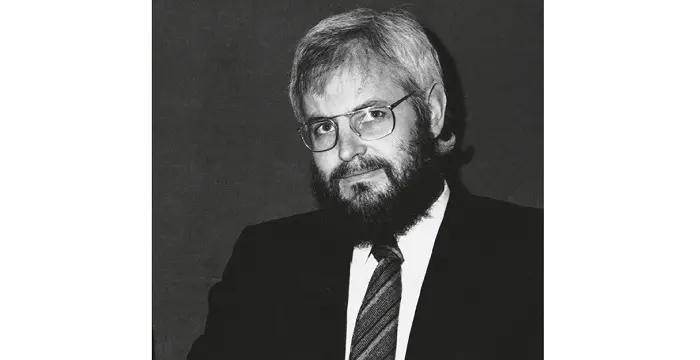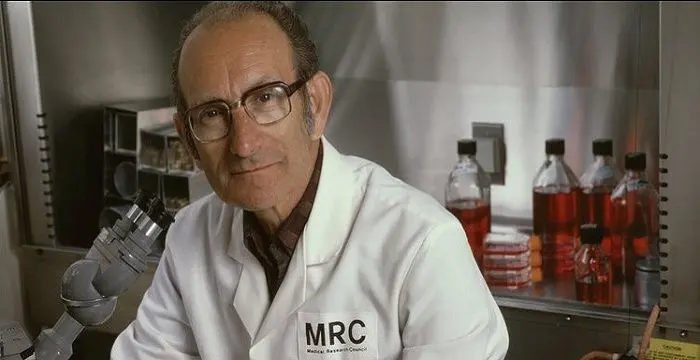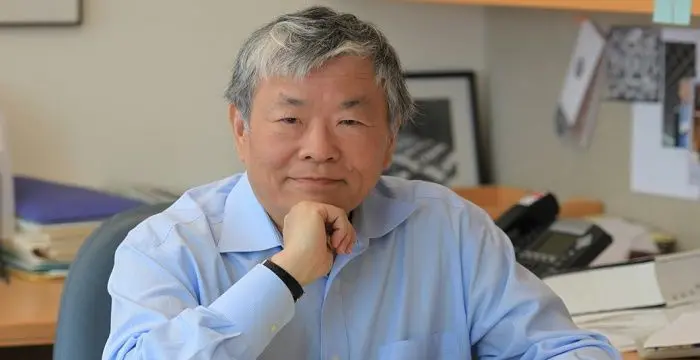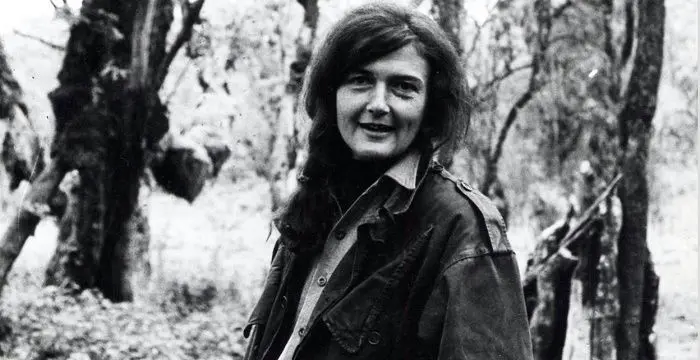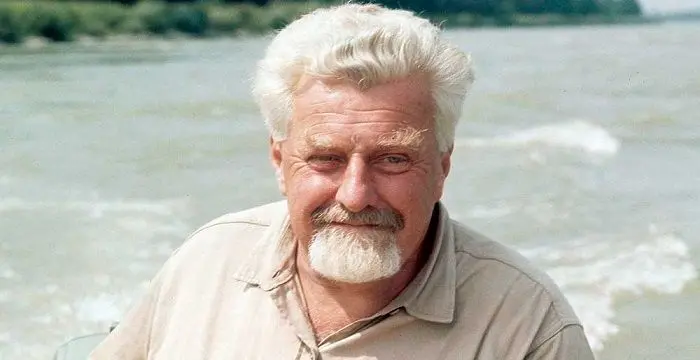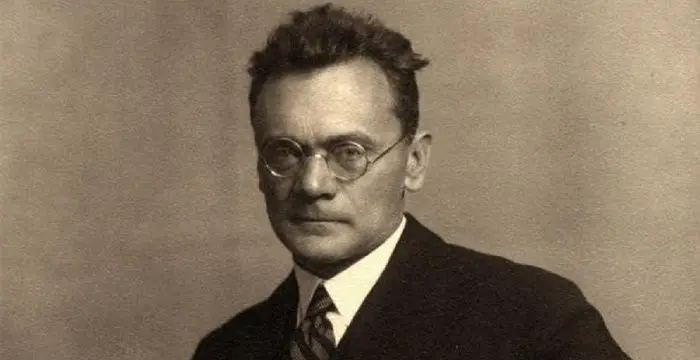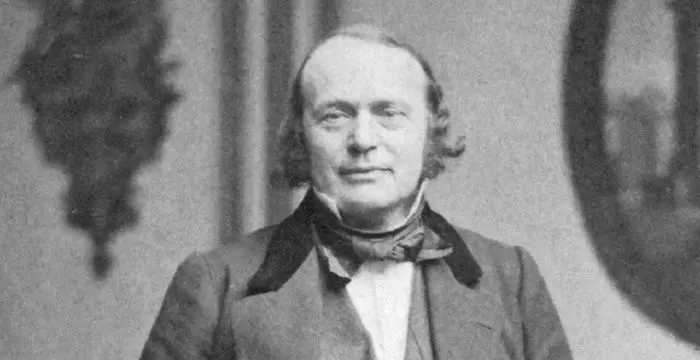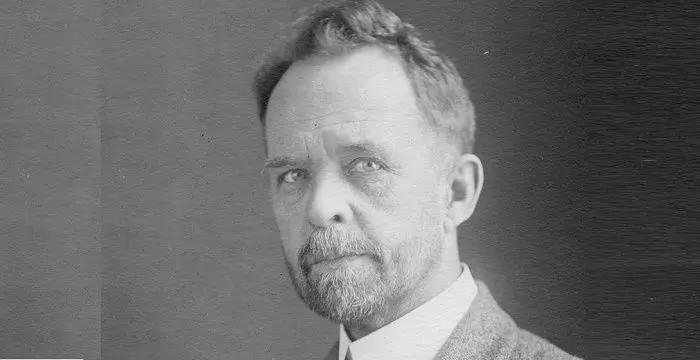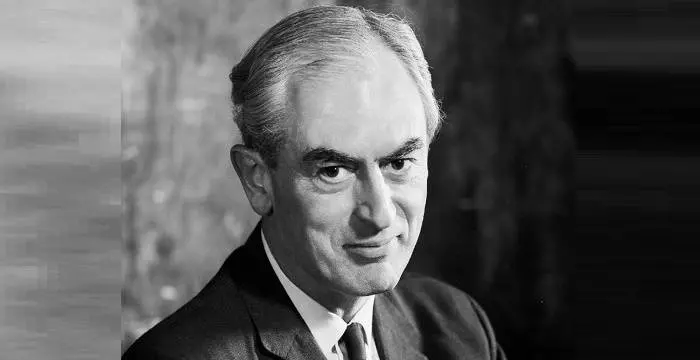
Peter Medawar - Biologists, Birthday and Personal Life
Peter Medawar's Personal Details
Sir Peter Brian Medwar was a Brazilian born British zoologist who was awarded the Nobel Prize for Physiology or Medicine in 1960
| Information | Detail |
|---|---|
| Birthday | February 28, 1915 |
| Died on | October 2, 1987 |
| Nationality | British |
| Famous | Scientists, Biologists, Immunologists, Zoologists |
| Spouses | Jean Shingle-wood Taylor |
| Birth Place | Petrópolis, Rio de Janeiro, Brazil |
| Gender | Male |
| Father | Nicholas Agnatius Medawar |
| Mother | Edith Muriel Dowling |
| Sun Sign | Pisces |
| Born in | Petrópolis, Rio de Janeiro, Brazil |
| Famous as | Biologist |
| Died at Age | 72 |
// Famous Scientists
Juliane Koepcke
Juliane Koepcke is a German-Peruvian biologist, who was the lone survivor among the 92 passengers and crew of the ill-fated LANSA Flight 508 that crashed in the Peruvian rainforest on 24 December 1971. Know more about her life in this biography.
Henry Cavendish
Henry Cavendish was a theoretical chemist and physicist, renowned for discovery of hydrogen and calculation of the mass of earth. To know more about his childhood, profile, timeline and career read on
Konstantin Tsiolkovsky
Konstantin Tsiolkovsky was a Russian rocket scientist and a pioneer of astronautics. This biography provides detailed information about his childhood, family, personal life, career, achievements, etc.
Peter Medawar's photo
Who is Peter Medawar?
Sir Peter Brian Medwar was a Brazilian born British zoologist who was awarded the Nobel Prize for Physiology and Medicine for discovering the theory of ‘acquired immunological tolerance’. He received this prize in 1960 along with Sir Frank Macfarlane Burnet. His development of the theory helped to find a method by which tissue and organ transplantation became possible later. The theory first suggested by Sir Frank was that soon after birth all vertebrates develop the capability to differentiate between elements that are a part of the body and those that are foreign. This theory was supported by Medawar though it was in contradiction to the earlier theory that vertebrates had this ability right from the conception stage itself. He proved the fact that skin grafts from one twin were acceptable by the other as both the twins had the same antigens which were required for the development of immunity. This discovery changed the basic idea of immunology and suggested that a fully developed immunity system can be altered so that it tries to suppress any rejection of foreign organs and tissues. His research work during the Second World War in the field of rejection of skin grafts for an increasing number of burn victims caused by German bombings became a very vital issue.
// Famous Biologists
Juliane Koepcke
Juliane Koepcke is a German-Peruvian biologist, who was the lone survivor among the 92 passengers and crew of the ill-fated LANSA Flight 508 that crashed in the Peruvian rainforest on 24 December 1971. Know more about her life in this biography.
Theodor Schwann
Theodor Schwann was a German physiologist who discovered the Schwann cells in the peripheral nervous system. This biography of Theodor Schwann provides detailed information about his childhood, life, achievements, works & timeline.
Norman Borlaug
Norman Borlaug was an American biologist known as the “Father of the Green Revolution”. This biography of Norman Borlaug provides detailed information about his childhood, life, achievements, works & timeline.
Childhood & Early Life
Peter Medawar was born in Petropolis, 40 miles from Rio de Janeiro, Brazil on February 28, 1915. His father, Nicholas Agnatius Medawar, was a Lebanese salesman while his mother was an English woman named Edith Muriel Dowling.
He was the second child of his parents. His elder brother was Phillip.
When his family moved to England, he attended the ‘Marlborough College’ from 1928 to 1932 where he developed a passion for biology.
He received his first class bachelor’s degree in zoology from the ‘Magdalen College, Oxford’ in 1935.
In 1935 he was appointed a ‘Christopher Welch Scholar and Senior Demonstrator’ at the ‘Magdalen College’.
He was elected as a ‘Fellow of Magdalen College’ again from 1946 to 1947 and was awarded a D.Sc. in 1947 when he was unable to complete his PhD due to his failure in providing the completion fee.
Career
Peter Medawar worked at ‘Sir William Dunn School of Pathology’ for some time after receiving his bachelor’s degree.
In 1935 he was appointed as a ‘Christopher Welch Scholar and Senior Demonstrator’ at the ‘Magdalen College’.
His first scientific work on connective tissue cells was carried out in 1937 but was not given much appreciation though it had a lot of influence on his later experiments.
He was elected as ‘Fellow of Magdalen’ in 1938 which continued up to 1944.
He remained at Oxford all through the Second World War, became a ‘Rolleston Prizeman’ in 1942, a ‘Senior Research Fellow of St. John’s College’ and a demonstrator of zoology at the university in 1944.
He carried out experiments on transplanting tissues especially skin during the World War II at the ‘Burns Unit’ of the ‘Glasgow Royal Infirmary’.
In 1943 he along with Thomas Gibson brought out a paper on the rejection process of skin grafts while working at the ‘Burns Unit’ of the ‘Glasgow Infirmary’ on behalf of the ‘War Wounds Committee’ of the ‘British Medical Council’.
He proved that ‘autografts’ from the burn victim’s other parts of the body were more easily accepted by the patient’s body than the ‘homografts’ or ‘allografts’ taken from a different individual. This suggested that the problem was more biological rather than surgical.
He continued his experiments after the war ended and during this period came across the theory and experiments that had been done by Frank Macfarlane Burnet, an Australian immunologist who had first suggested the theory of ‘acquired immunological tolerance’.
In 1947 he was appointed a ‘Mason Professor of Zoology’ at the ‘University of Birmingham’ and moved to Birmingham.
In 1947 he formed a research group with Leslie Brent and Billingham.
He worked as a professor of zoology at the University of Birmingham from 1947 to 1951.
In 1951 he joined the University College, London, as a ‘Jordell Professor of Zoology and Comparative Anatomy’ and remained there till 1962.
In 1962 he was the director of the ‘National Institute for Medical Research’ in London up to 1971.
He became the head of the clinical research center of the ‘Medical Research Council’ at Harrow which was involved in skin transplantation in 1971 and remained in the post till 1986.
From 1977 to 1983 he worked on experimental medicine at the Royal Institution.
He became the president of the ‘Royal Postgraduate Medical School in 1981 and held the post till 1987.
Major Works
Peter Medawar published ‘The Uniqueness of the Individual’ in 1957 followed by ‘The Future of Man’ in 1959.
His next work ‘The Art of the Soluble’ came out in 1967 while “The Hope of Progress’, ‘The Life Science’ and ‘Pluto’s Republic’ were published in 1972, 1977 and 1982 respectively.
He brought out his autobiography ‘Memoir of a Thinking Radish’ in 1986.
Awards & Achievements
Peter Medawar was elected ‘Fellow of the Royal Society of London’ in 1949 and received the ‘Royal Medal’ from the society in 1959.
He was honored with C.B.E. or ‘Commander of the British Empire’ award in 1958.
He received the Nobel Prize in 1960.
He received his knighthood in 1965.
He was awarded a C.H. or ‘Companion of Honor’ in 1972 and an O.M. or ‘Order of Merit’ in 1981.
Personal Life & Legacy
He married Jean Shingle-wood Taylor in February 1937 and had four children from the marriage.
He suffered his first stroke in 1969 while delivering a speech which left him paralyzed. He had many more strokes after that.
Peter Medawar died of a stroke in London, UK, on October 2, 1987.
// Famous Immunologists
Georges J. F. Kohler
Georges J. F. Kohler was a German immunologist who received the Nobel Prize in Physiology or Medicine in 1984. Check this biography to get details about his life, profile and timeline.
Cesar Milstein
Cesar Milstein was an Argentinian biochemist who received the Nobel Prize for his discovery of monoclonal antibody. Explore this biography to get details about his life, career and scientific discoveries.
Susumu Tonegawa
Susumu Tonegawa is a Japanese molecular biologist who was awarded the Nobel Prize for Physiology or Medicine in 1987. This biography of Susumu Tonegawa provides detailed information about his childhood, life, achievements, works & timeline.
Peter Medawar's awards
| Year | Name | Award |
|---|---|---|
Other | ||
| 0 | Copley Medal (1969) | |
| 0 | Kalinga Prize (1985) | |
| 0 | Michael Faraday Prize (1987) | |
| 0 | FRS (1949) | |
| 0 | Royal Medal (1959) | |
| 0 | Nobel Prize in Physiology or Medicine (1960) | |
Peter Medawar biography timelines
- // 28th Feb 1915Peter Medawar was born in Petropolis, 40 miles from Rio de Janeiro, Brazil on February 28, 1915. His father, Nicholas Agnatius Medawar, was a Lebanese salesman while his mother was an English woman named Edith Muriel Dowling.
- // 1928 To 1932When his family moved to England, he attended the ‘Marlborough College’ from 1928 to 1932 where he developed a passion for biology.
- // 1935He received his first class bachelor’s degree in zoology from the ‘Magdalen College, Oxford’ in 1935.
- // 1935In 1935 he was appointed a ‘Christopher Welch Scholar and Senior Demonstrator’ at the ‘Magdalen College’.
- // 1935In 1935 he was appointed as a ‘Christopher Welch Scholar and Senior Demonstrator’ at the ‘Magdalen College’.
- // 1937His first scientific work on connective tissue cells was carried out in 1937 but was not given much appreciation though it had a lot of influence on his later experiments.
- // Feb 1937He married Jean Shingle-wood Taylor in February 1937 and had four children from the marriage.
- // 1938 To 1944He was elected as ‘Fellow of Magdalen’ in 1938 which continued up to 1944.
- // 1942 To 1944He remained at Oxford all through the Second World War, became a ‘Rolleston Prizeman’ in 1942, a ‘Senior Research Fellow of St. John’s College’ and a demonstrator of zoology at the university in 1944.
- // 1943In 1943 he along with Thomas Gibson brought out a paper on the rejection process of skin grafts while working at the ‘Burns Unit’ of the ‘Glasgow Infirmary’ on behalf of the ‘War Wounds Committee’ of the ‘British Medical Council’.
- // 1947In 1947 he was appointed a ‘Mason Professor of Zoology’ at the ‘University of Birmingham’ and moved to Birmingham.
- // 1947In 1947 he formed a research group with Leslie Brent and Billingham.
- // 1947 To 1951He worked as a professor of zoology at the University of Birmingham from 1947 to 1951.
- // 1949 To 1959Peter Medawar was elected ‘Fellow of the Royal Society of London’ in 1949 and received the ‘Royal Medal’ from the society in 1959.
- // 1951 To 1962In 1951 he joined the University College, London, as a ‘Jordell Professor of Zoology and Comparative Anatomy’ and remained there till 1962.
- // 1957 To 1959Peter Medawar published ‘The Uniqueness of the Individual’ in 1957 followed by ‘The Future of Man’ in 1959.
- // 1958He was honored with C.B.E. or ‘Commander of the British Empire’ award in 1958.
- // 1960He received the Nobel Prize in 1960.
- // 1962 To 1971In 1962 he was the director of the ‘National Institute for Medical Research’ in London up to 1971.
- // 1965He received his knighthood in 1965.
- // 1969He suffered his first stroke in 1969 while delivering a speech which left him paralyzed. He had many more strokes after that.
- // 1971 To 1986He became the head of the clinical research center of the ‘Medical Research Council’ at Harrow which was involved in skin transplantation in 1971 and remained in the post till 1986.
- // 1972 To 1981He was awarded a C.H. or ‘Companion of Honor’ in 1972 and an O.M. or ‘Order of Merit’ in 1981.
- // 1977 To 1983From 1977 to 1983 he worked on experimental medicine at the Royal Institution.
- // 1981 To 1987He became the president of the ‘Royal Postgraduate Medical School in 1981 and held the post till 1987.
- // 1986He brought out his autobiography ‘Memoir of a Thinking Radish’ in 1986.
- // 2nd Oct 1987Peter Medawar died of a stroke in London, UK, on October 2, 1987.
// Famous Zoologists
Charles Darwin
Charles Darwin was one of the most influential figures in human history. Go through this biography to get details about his life, profile and timeline.
Dian Fossey
Dian Fossey was an American zoologist and conservationist. Check out this biography to know about her birthday, childhood, family life, achievements and fun facts about her.
Konrad Lorenz
Konrad Lorenz was a Nobel Prize winning scientist from Austria who developed the branch of ethology. This biography provides detailed information regarding his childhood, career, profile and timeline
Karl von Frisch
Karl von Frisch was an Austrian ethologist who received a share of the Nobel Prize in Physiology or Medicine in 1973. This biography of Karl von Frisch provides detailed information about his childhood, life, achievements, works & timeline.
Louis Agassiz
Louis Agassiz was a Swiss biologist who studied natural history and founded the ‘Museum of Comparative Zoology’ in Harvard University. To know more about his childhood, profile, timeline and career read on
Thomas Hunt Morgan
Thomas Hunt Morgan was a Nobel Prize winning American evolutionary biologist, geneticist and embryologist. Check out this biography to know about his childhood, life, achievements, works & timeline.
Peter Medawar's FAQ
What is Peter Medawar birthday?
Peter Medawar was born at 1915-02-28
When was Peter Medawar died?
Peter Medawar was died at 1987-10-02
Where was Peter Medawar died?
Peter Medawar was died in London, England, United Kingdom
Which age was Peter Medawar died?
Peter Medawar was died at age 72
Where is Peter Medawar's birth place?
Peter Medawar was born in Petrópolis, Rio de Janeiro, Brazil
What is Peter Medawar nationalities?
Peter Medawar's nationalities is British
Who is Peter Medawar spouses?
Peter Medawar's spouses is Jean Shingle-wood Taylor
Who is Peter Medawar's father?
Peter Medawar's father is Nicholas Agnatius Medawar
Who is Peter Medawar's mother?
Peter Medawar's mother is Edith Muriel Dowling
What is Peter Medawar's sun sign?
Peter Medawar is Pisces
How famous is Peter Medawar?
Peter Medawar is famouse as Biologist



